TUTORIALS
The 2023 IEEE AFRICON Tutorials provide an opportunity for researchers, developers, and practitioners from academia and industry to learn about state-of-the-art research through lectures, interactive sessions, hands-on training, or any combination of the above.
Click on the Tutorial Topic to view more details about it.
Tutorial Presenter
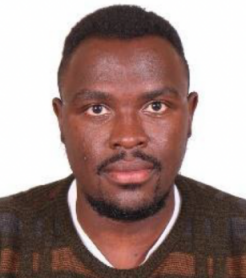
Jason Kabi
Centre for Data Science and Artificial Intelligence (DSAIL),
Dedan Kimathi University of Technology,
Kenya.
Biography
He is currently a Research intern at Centre for Data Science and Artificial Intelligence (DSAIL), Dedan Kimathi University of Technology. He is also a Graduate Electrical Engineer and Data Scientist with experience in Machine Learning, IoT/Sensor systems development, IoT/Sensor systems deployment, data analysis, data visualization, and Electrical hardware (PCB) Design. In this session he will be taking the audience through a river Water level Monitoring project. Data collected can be used to diagnose the status of the river catchment.
Tutorial Presenter
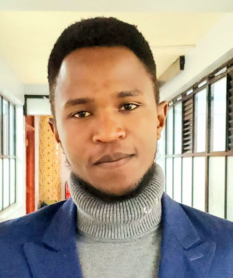
Stephen Githinji
Centre for Data Science and Artificial Intelligence (DSAIL),
Dedan Kimathi University of Technology,
Kenya.
Biography
He is currently a Research intern at Centre for Data Science and Artificial Intelligence (DSAIL), Dedan Kimathi University of Technology. As an Actuarial Science and Statistics graduate, he has a solid foundation in statistical modeling, data analysis, and time series analysis. He has also completed various online courses and certifications in data science and machine learning. His passion for data science and machine learning stems from my desire to solve complex problems and uncover insights that can drive meaningful change. He is excited to continue exploring this field and leveraging his skills to contribute to innovative projects and research.
Tutorial Presenter
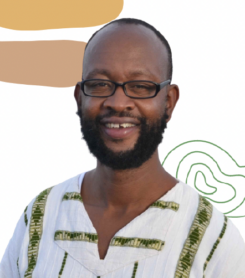
Prof. Ciira Maina
Lecturer,
Dedan Kimathi University of Technology,
Kenya.
Biography
He is a lecturer at Dedan Kimathi University of Technology in Nyeri, Kenya where I also conduct research in a number of areas including bioacoustics, IoT, machine learning and data science. Prior to joining DeKUT in 2013, I was a postdoctoral researcher at the University of Sheffield between 2011 and 2013, a PhD student at Drexel University in Philadelphia, USA between 2007 and 2011 and a BSc Student at the University of Nairobi between 2002 and 2007.
Abstract
The tutorial aims to provide a low-cost solution for monitoring the impact of climate change and catchment degradation on river water level patterns. The tutorial will cover the development of a river water level data acquisition system. The main sections will be the realization of a water level sensor node and the integration of a wireless sensor network for data transmission from the sensor node to a network server.
The tutorial will also highlight the integration of KENET cloud services in storing the sensor node data from the network server. The sensor node prototypes to be developed will be based on the Arduino Nano, an ATmega328 based microcontroller. The prototypes will also include: an ultrasonic sensor for data acquisition, an RFM95-868MHZ LoRa module setup for data transmission and a DC power supply with a Lithium Ion battery as the source.
Another highlight of the tutorial will be the explanation of how the data is acquired and the data quality control and validation measures with reference to a sensor node deployed along River Muringato in Nyeri County, Kenya.
The data quality control showcase with involve the utilization of machine learning models in detecting anomalies from the data collected. The validation step will involve the comparison of data collected along River Muringato to cause-datasets such as rainfall. The section will also highlight how prediction models can be utilized once other external datasets such as rainfall are incorporated.
Generally, the tutorial is intended for individuals or organizations interested in developing low-cost river water level monitoring systems to manage water resources and preserve ecosystems and researchers interested in the development of open source solutions.
Tutorial Presenter
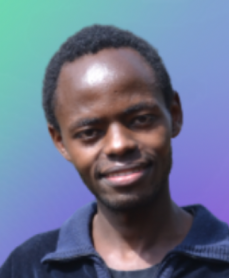

Gabriel Kiarie
Centre for Data Science and Artificial Intelligence (DSAIL),
Dedan Kimathi University of Technology,
Kenya.
Biography
He is a graduate Electrical and Electronic Engineer. Currently, he is pursuing his MSc in Telecommunication Engineering at Dedan Kimathi University of Technology. He is also working as a Research Intern at the Centre for Data Science and Artificial Intelligence (DSAIL), Dedan Kimathi University of Technology. He has an interest in electrical and electronic hardware design. He has been involved in the design of Raspberry Pi-based acoustic sensors and camera traps for ecological data collection. His master’s research involves developing a low-cost Raspberry Pi Time Domain Reflectometer (TDR) for detecting and locating faults in electric fences.
Tutorial Presenter


Lorna Mugambi
Centre for Data Science and Artificial Intelligence (DSAIL),
Dedan Kimathi University of Technology,
Kenya.
Biography
Lorna is a graduate engineer who works as a researcher at the Centre for Data Science and Artificial Intelligence (DSAIL). She is currently pursuing an MSc in Telecommunication Engineering at Dedan Kimathi University of Technology, while mainly focusing on research related to AI in healthcare. She has been a part of developing software for a camera trap deployed in the university’s conservancy deployed in the aim to detect predators. Her master’s research involves the tracing of valve motion in the heart and the early detection of Rheumatic Heart Disease.
Tutorial Presenter
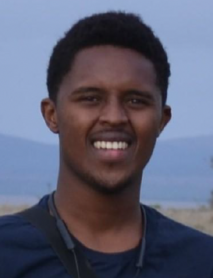

Yuri Njathi
Centre for Data Science and Artificial Intelligence (DSAIL),
Dedan Kimathi University of Technology,
Kenya.
Biography
Yuri is a researcher at the Centre for Data Science and Artificial Intelligence (DSAIL) in Dedan Kimathi University of Technology. He works on computer vision tasks around wildlife imagery and health. He is also pursuing his MSc in Electrical and Electronics Engineering. Currently, his research is focused on computer vision tasks for wildlife conservation.
Tutorial Presenter



Prof. Ciira Maina
Lecturer,
Dedan Kimathi University of Technology,
Kenya.
Biography
He is a lecturer at Dedan Kimathi University of Technology in Nyeri, Kenya where I also conduct research in a number of areas including bioacoustics, IoT, machine learning and data science. Prior to joining DeKUT in 2013, I was a postdoctoral researcher at the University of Sheffield between 2011 and 2013, a PhD student at Drexel University in Philadelphia, USA between 2007 and 2011 and a BSc Student at the University of Nairobi between 2002 and 2007.
Abstract
In this 90-minute interactive session, we will discuss the steps taken to design and build a Low-Cost Raspberry Pi-based Camera Trap and how to integrate wildlife detection models into them. The presentation will have five sections: Introduction to Camera Traps, Hardware Development, Software Development, Wildlife Data and Machine Learning Development. The hardware development will present on the physical parts of a camera trap and how to design it for protection and power performance. The software development will include how to capture images and videos using Python programming. Wildlife data will consist of an appropriate description of the DSAIL-Porini dataset. Machine Learning Development will examine model training and deployment on the Raspberry Pi.
Motivation: Ecologists and conservationists perform surveys by counting animals and monitoring their behaviours. These surveys can be conducted physically or using technology. This information is important for conservationists to understand the health of a conservancy. Nowadays using camera traps to acquire wildlife images is becoming more common within conservancies. Camera traps are able to monitor wildlife passively. The hardware and software of the camera traps are usually designed in such a way as to collect as much wildlife imagery at low power consumption as possible. After a period of time, the data is retrieved from the camera traps and processed in the cloud. Since the information is what is of interest to the conservationist, wildlife detection in the camera traps will reduce the workload, making it computationally cheaper to process the data.